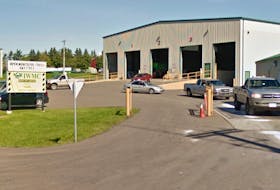Friday, the Fourth National Climate Assessment was released. It’s a sobering look at the economic and physical effects of climate change in the United States, and where those changes are leading.
At 1,656 pages, the report is massive. Much of the news coverage of the document focused on the fact that its findings are diametrically opposed to the climate beliefs espoused by the American president, and the fact the report was released on the Friday after American Thanksgiving, a day where news stories go to die.
One of the most interesting parts of the report for Atlantic Canadians might well be the part that’s closest to us: the future of the Northeastern corner of the United States, a region that has much in common with ours.
Climate change is expected to hit that region hard. (You can find the chapter online here: https://nca2018.globalchange.gov/chapter/18/ )
Change is coming fast. “By 2035, and under both lower and higher scenarios, the Northeast is projected to be more than 3.6°F (2°C) warmer on average than during the preindustrial era. This would be the largest increase in the contiguous United States and would occur as much as two decades before global average temperatures reach a similar milestone.”
Keep in mind that’s less than 20 years away — and it’s not just temperatures changing.
“The Northeast has experienced some of the highest rates of sea level rise and ocean warming in the United States, and these exceptional increases relative to other regions are projected to continue through the end of the century,” the report says. The Northeast isn’t equipped for that: “an estimated 88 per cent of the Northeast population lives on developed coastal landforms that have limited ability to naturally adapt to sea level rise.”
The report warns of increased coastal erosion, higher than experienced tides, and much more severe storm surges.
The economic effects are already significant and will increase. Warmer winters, with significantly more peak rainfall, will bring a host of changes, from potential damage to the forest industry from increased numbers of pests, to problems for fruit trees that may blossom early and then be seriously damaged by cold snaps. Freshwater species are expected to have lower productivity due to higher water temperatures.
The report suggests declines in ocean fisheries, too, including lucrative species like cod, lobster and scallop.
“Future ocean warming and acidification, which are expected under all scenarios considered, would affect fish stocks and fishing opportunities available to coastal communities. Fisheries targeting species at the southern extent of their range have already experienced substantial declines in landings with rising ocean temperatures, and this pattern is projected to continue in the future.”
Its Friday release may mean many Americans won’t even hear about the report.
The effects of climate change?
Those will be more obvious.








